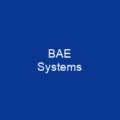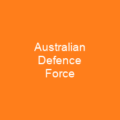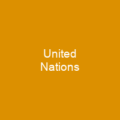NATO: A Pillar of International Security
Imagine a fortress, built to protect its members from external threats. That’s what the North Atlantic Treaty Organization (NATO) has become over the years. Established on April 4, 1949, with just twelve founding member states, NATO now stands as an alliance of 32 nations, stretching across Europe and North America. But how did this organization evolve into such a formidable force?
The Evolution of NATO
NATO’s journey is one of expansion and adaptation. From its initial members like Belgium, Canada, Denmark, France, Iceland, Italy, Luxembourg, the Netherlands, Norway, Portugal, the United Kingdom, and the United States, to the more recent additions such as Albania, Croatia, Montenegro, North Macedonia, Finland, and Sweden, each new member brings a unique perspective and capability. But what drives these countries to join this alliance?
Key Players and Challenges
The alliance is not just about numbers; it’s also about power dynamics. Three nuclear-armed states—France, the UK, and the US—are part of NATO, but France remains outside the Nuclear Planning Group. This unique arrangement raises questions: How does this affect the overall strategy and unity within the alliance? And what implications might it have for future decisions?
As we look at the current landscape, three more countries—Bosnia and Herzegovina, Georgia, and Ukraine—are aspiring members. The Bucharest Summit in 2008 promised a bright future for these nations, but their path to full membership remains uncertain. Meanwhile, some dependencies like Cyprus, Algeria, and Malta have chosen not to pursue NATO membership after gaining independence.
Financial Commitments and Realities
The financial commitment required by NATO members is another critical aspect. The United States alone spends more on defence than all other NATO countries combined. This raises the question: Is this level of spending sustainable, or does it strain the resources of member states? Moreover, most nations did not meet their 2% GDP defence spending commitment in 2023, highlighting a significant gap between promise and reality.
Public Perception and Support
Public opinion on NATO is mixed. According to Pew Research Center’s 2016 survey, while most countries view NATO positively, there are differing views on whether their country should militarily aid another NATO ally if it faces a serious military conflict with Russia. This divide suggests that while the alliance has strong support in many quarters, there are also concerns about its effectiveness and relevance.
Only half or fewer of those surveyed in six out of eight countries believe their nation should use military force to defend a NATO ally against Russian aggression. This indicates a need for clearer communication and understanding among member states regarding the alliance’s role and responsibilities.
The Future of NATO
As we move forward, NATO faces several challenges. How will it adapt to new threats like cyber warfare and hybrid warfare? Will it continue to expand its membership, or focus on strengthening existing relationships? And how can member states bridge the gap in defence spending?
NATO’s future is not just about military strategy; it’s also about fostering a sense of unity and mutual support among its members. The alliance must navigate these challenges while maintaining its core mission: to protect and defend its member states.

In conclusion, NATO remains a vital institution in the global security landscape. Its evolution and current state reflect the complex interplay of politics, economics, and international relations. As member states continue to grapple with these issues, one thing is clear: NATO’s future will be shaped by its ability to adapt and respond to new challenges while maintaining the trust and cooperation among its members.
You want to know more about Member states of NATO?
This page is based on the article Member states of NATO published in Wikipedia (retrieved on November 29, 2024) and was automatically summarized using artificial intelligence.







